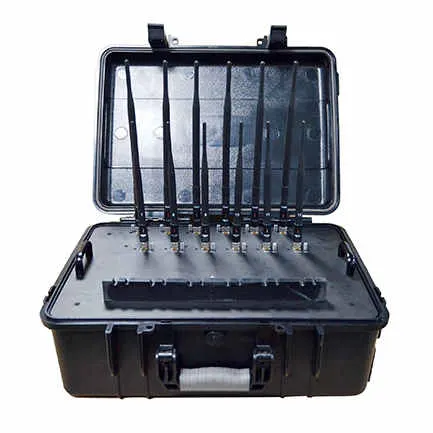
Discussion of signal jamming was once largely confined to electronic warfare forums. But with the rise of self-driving car technology, interference has become a mainstream topic. Now, it is useful to know some basics of the test setup and signal propagation principles needed to evaluate anti-jamming techniques. Many complex advances in signal jamming can be attributed to radar. Therefore, it is useful to start by reviewing some of the fundamentals of radar.
Of course, the idea of radar is that the target reflects some of the energy of the transmitted signal. The returned energy is received and processed to detect the target and extract its position and relative velocity. If the original antenna beam is narrow enough, the arrival direction of the return signal can also reveal the angular position of the target. If there is relative motion between the target and the radar, the carrier frequency offset of the reflected wave (i.e., the Doppler shift) is a measure of the relative radial velocity of the target and can be used to distinguish a moving target from a stationary object.
A typical radar transmitter emits a signal in the form of a pulse. And the pulse usually has a low duty cycle, where the duty cycle is the ratio of the pulse duration to the pulse period. In addition, the resolution of radar (and liDAR) is limited by the width of the pulse. For example, a 1-microsecond pulse spans 150 meters in space, so a radar emitting a 1-microsecond pulse cannot distinguish distances smaller than 150 meters.
That is, linear FM modulation is a method used to increase the range resolution of a radar signal to better than 1/(pulse width). A linear frequency modulation signal is a signal whose frequency increases or decreases with time. There are several types of linear frequency modulation - linear, non-linear, exponential, etc. Some systems also transmit compressed pulses in an attempt to reduce transmitter power and the likelihood of interception. Overall, the subject quickly gets complicated. Therefore, a LFM radar consists of a stage that modulates the transmitted pulse, transmits the pulse, receives the echo, and then associates the received signal with the transmitted pulse.
Ambiguity may occur when the energy returns from a distant target after the radar has already sent out a second pulse. This is called a secondary echo. To measure distant objects unambiguously, radar must wait for their pulses to return. However, the fastest objects that radar can definitively measure depend on the emitted pulse rate, which is the pulse repetition rate. In order to measure the speed of a fast object, the PRF must be high, so there is a trade-off between radar range and speed detection.
One thing to note is that a radar signal jammers usually has a range advantage over the radar it targets. This is because the signal from the jammer to the radar has a 1/R2 path loss, while the signal from the radar will have a 1/R4 loss due to the target bounce.
With these points in mind, consider the different types of radar jamming methods defined in electronic warfare. Jammer _ Barrage attempts to flood the radar receiver with stray signals in the receiving band. Noise jammers use AM or phase noise to modulate jamming signals. Deceptive jammers use Repeaters or memory to generate a replica of the radar echo, with appropriate changes in time or frequency. Repeater jammers modify and retransmit the received radar signal so that the resulting echoes relay inaccurate positions. Similarly, a transponder jammer is a repeater that reproduces a stored copy of the signal after being triggered by radar signal reception.